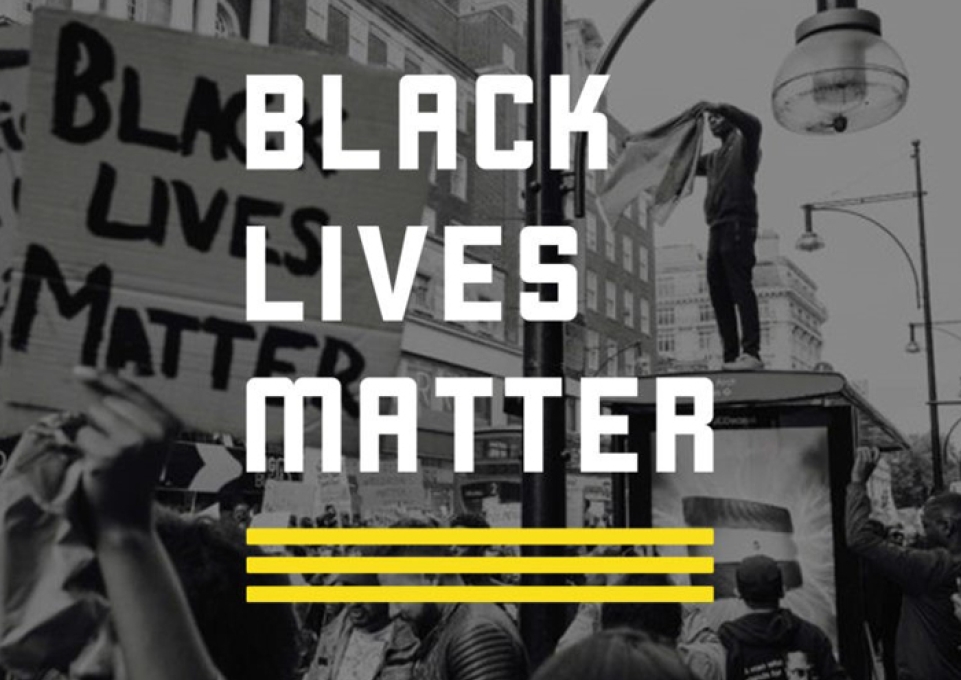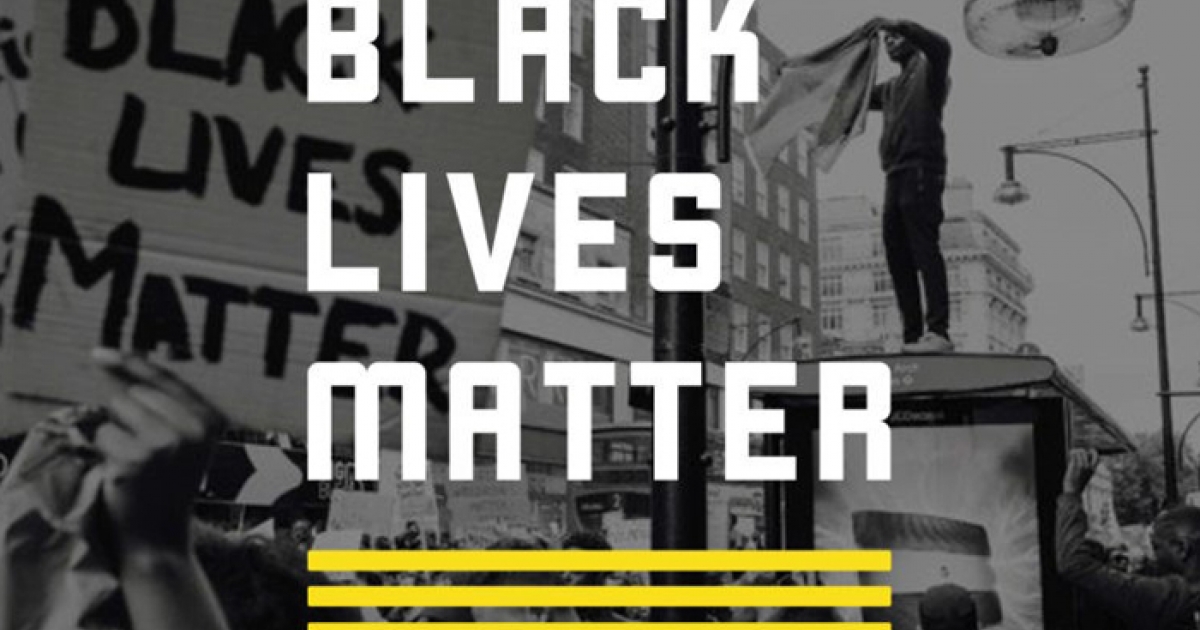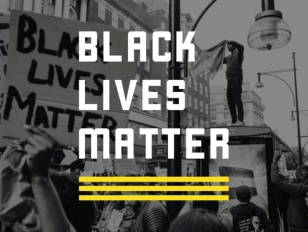
The protests that galvanized the country following the May 25 death of George Floyd thrust the Black Lives Matter (BLM) movement into the spotlight. They’ve also inspired more conversations about police brutality and other aspects of racism that seep into everyday life.
While the highly publicized shootings of Black individuals, including unarmed teenagers Trayvon Martin and Michael Brown, within the past 10 years have resulted in public condemnation, some say that support hasn’t been as long-lasting or as vocal as we’ve seen in 2020. A June 10 New York Times article noted that American voters’ support for the BLM movement increased over the past two weeks almost as much as it had in the preceding two years. And a Siena poll of registered state voters released June 30 showed more than 80 percent of New Yorkers believe that systemic racism in the United States is a very (51%) or somewhat (30%) serious problem.
Five Buffalo State faculty members weighed in on the current race relations climate. They are Ron Stewart, chair and professor of sociology, who is the founder of Buffalo State’s African American Male Empowering Network (AAMEN), and four faculty members hired in 2019 and 2020 through SUNY’s Promoting Recruitment, Opportunity, Diversity, Inclusion, and Growth—or PRODiG—initiative: Naila Ansari, assistant professor of theater and a professional dancer, whose work focuses on the “performance of joy” in marginalized communities through collections of oral histories, movement, performance, and film; Cameron Herman, assistant professor of sociology, whose research focuses on the ways marginalized groups experience and navigate inequality in urban environments; John Torrey, assistant professor of philosophy, whose research includes the role that social recognition has in moral and political deliberations to rectify injustices committed against African Americans; and Marcus Watson, assistant professor of Africana studies and individualized studies, whose research focuses on Africa and the African diaspora, with particular interest in South Africa, Ghana, the Afro Caribbean, and Black America. They all teach in the college’s new Africana studies program.
Has the nation reached a tipping point?
“I think we are at a watershed moment,” Stewart said. “The horrific visual images broadcast via news and social media brought the inhumanity to everyone’s living room or phone. The nation could see the parallel images to Birmingham in 1963 and to Mississippi in 1955. The way that George Floyd was essentially lynched was reminiscent of Emmett Till.”
The fact that many young White people participated in the ensuing protests has been an encouraging sign, he said, as has the number of states removing Confederate flags and monuments.
“Tearing down physical vestiges of White supremacy and racial intolerance is important,” he said. “It signifies a real change.”
Watson noted that while it’s encouraging to see all races use the words White supremacy and anti-racism, he added, “There’s a temptation to slip into responses to racial injustice using rhetoric eerily similar to color-blind racism and ‘all lives matter.’ We just need a few more people to be brave enough to make history, and we’ll make history.”
Ansari noted that, historically, the United States has reached many tipping points in regard to race. This one, however, is fueled by exhaustion.
Because of being inside during the pandemic, “people have no choice but to see the threats against people of color, especially Black communities,” Ansari said. “People are tired, enraged, and ready for change. While it may seem forced because of COVID-19, I hope that this movement exhausts people so much that, just maybe, they can tap into what it feels likes to be Black in America.”
Herman also noted the importance of the riots coinciding with the pandemic.
“The faltering economy has galvanized Americans around public health and economic concerns,” he said. “People may be seeing connections between their challenges and the challenges facing other communities, such as police violence.”
At the same time, he noted, there is a clamoring for things to go back to normal. And he’s concerned racial attitudes will shift backward, right along with people’s ability to return to work and dine in restaurants again.
Social media has also undeniably been a huge influencer on public opinion.
Derek Chauvin, the Minneapolis Police officer who pinned his knee to Floyd’s neck for more than eight minutes, was charged with second-degree manslaughter, and the other officers involved in the incident were fired, due in part to witness videos. And White citizens who have acted shamefully have lost their jobs, including Amy Cooper, who called the police on Christian Cooper, a Black bird-watcher in Central Park, and falsely claimed he was threatening her. The video of the Memorial Day incident has amassed nearly 50 million views on Twitter.
“White folks are losing their jobs after these videos come out,” Ansari said. “That is something of a game changer.”
Torrey added that what people do with the information flooding their social media feeds is critical.
“Everyone has a pretty good idea of what’s going on,” Torrey said. “Whether you think your future is connected to Blacks is a different thing.”
“Black Lives Matter goes beyond police violence. We also have to consider gentrification of our neighborhoods, underfunded education for poor and minority children, and unequal access to health care. Black Lives Matter is speaking to all the ways Black lives are being hurt.”
Do you think public sentiment has shifted regarding the Black Lives Matter movement?
Herman and Stewart both noted the prevalence of Black Lives Matter yard signs throughout Elmwood Village in recent weeks.
“It’s one level of support,” Herman said. “But I also wonder about who used to live in this community. Black Lives Matter goes beyond police violence. We also have to consider gentrification of our neighborhoods, underfunded education for poor and minority children, and unequal access to health care. Black Lives Matter is speaking to all the ways Black lives are being hurt. Are White people seeing the connection?”
And there is some amount of pandering and opportunism tied to surface support, Torrey noted.
“I’ve seen [the video game] Call of Duty and a sandwich chain getting behind Black Lives Matter,” Torrey said. “And I wonder how much money they’re making off that.”
Stewart noted that some people have inaccurately blamed the BLM movement for the anarchy and looting that became part of the protests, which distracts from its straightforward purpose.
“Unfortunately, we need a movement to do and say what’s included in the 14th Amendment to the Constitution,” he said.
While there may be increased multiracial support for protecting the physical lives of Black people, Watson said, BLM raises the question: “What about the minds of Black people?”
“We still need to have more Black perspectives on boards and in influential roles in businesses, cities, organizations, and universities,” he said. “I think Buffalo State is ahead of the curve in that it hired four PRODiG program faculty directly into the Africana studies program. That is where the voices of Black people globally are valued and matter.”
Will changes in public sentiment last?
While there have been encouraging signs of a change in attitude, Watson noted, there is still plenty of work to do.
“Other social justice issues have leapfrogged race in recent years,” he said. “We have developed a comfort level with discussing issues of gender, sexuality, and queer identity. These are steps forward, but we can still barely say the word ‘Black,’ much less understand anti-Blackness as the deepest root of America’s interlocking social injustices.”
Torrey said he’s typically a pessimist when it comes to expecting real change.
“The thought of getting across the finish line seems premature, and I don’t think many people are seeing what’s been happening as a finish-line approach,” he said. “There needs to be wholesale systematic change.”
He and the other faculty members provided examples of concrete ways people of all races can contribute to that change:
- Ask thoughtful questions and really listen to the answers.
- Read literature by Black authors and watch documentaries about the Black experience.
- Increase their cultural competence of both African Americans and other people of color.
- Support Black-owned businesses.
- Refuse to be a bystander when witnessing incidents of racial intolerance or injustice.
- Get involved in organizations devoted to social and racial justice
Photo courtesy of Black Lives Matter.



